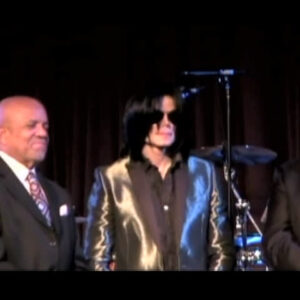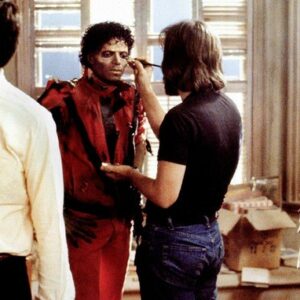In the ever-evolving landscape of entertainment, few figures have managed to carve out a space that spans across as many genres and mediums as Queen Latifah. Born Dana Elaine Owens, she first made waves in the music world as a pioneering female rapper before transcending into a bona fide Hollywood star, actress, producer, and cultural icon. Queen Latifah’s career is as diverse as it is influential, but it’s her music that laid the foundation for everything to come. And within that music, her music videos stand as bold statements of empowerment, creativity, and a reflection of the woman herself.
In this article, we explore Queen Latifah’s favorite music video moments, examining how these visual masterpieces not only showcased her unique talent but also helped define the cultural conversation surrounding gender, race, and respect.
Breaking Ground as a Female Rapper
When Queen Latifah first entered the music scene in the late 1980s, hip-hop was largely dominated by male voices. The genre, known for its raw expression and political commentary, lacked prominent female representation. Then came Latifah, with her commanding voice and regal presence. From the very beginning, her music videos were a visual representation of her mission to empower women and claim a space in a male-dominated industry.
Her early music video for “Ladies First,” featuring Monie Love, is one of the standout moments in her career. Released in 1989, “Ladies First” became an anthem for female empowerment, celebrating women’s strength, resilience, and capability. The video itself was groundbreaking—set against a backdrop of revolutionary imagery, including African liberation movements, it was more than just a music video; it was a statement.
In the video, Queen Latifah and Monie Love rap with authority, their lyrics centered on women’s empowerment and black pride. The video’s unapologetically bold aesthetic challenged the industry norms and helped set the tone for Queen Latifah’s career. Here was a woman who refused to conform, who demanded to be seen, and who was unafraid to speak truth to power.
This was the beginning of Queen Latifah’s rise, and it was her music videos, which combined powerful messages with stylish visuals, that helped solidify her as a pioneering voice in hip-hop.
Celebrating Empowerment: U.N.I.T.Y. and the Fight for Respect
Arguably one of Queen Latifah’s most iconic music videos is for the song “U.N.I.T.Y.” Released in 1993, the song and its accompanying video tackled the pressing issue of disrespect toward women in hip-hop and society at large. At a time when misogyny in the genre was rampant, Queen Latifah’s message was a breath of fresh air—a call for respect and dignity.
The “U.N.I.T.Y.” video opens with Latifah riding a motorcycle, symbolizing her independence and power. The video’s urban landscape, peppered with scenes of everyday life, offers a gritty backdrop to her message: women deserve respect, and no one—man or otherwise—has the right to demean or diminish them. Latifah’s lyrics address issues of street harassment, domestic violence, and sexism, all while maintaining a sense of hope and empowerment.
What makes the “U.N.I.T.Y.” video so significant is its raw simplicity. There are no flashy effects, just Queen Latifah’s presence and her message. The strength of the video lies in its authenticity—Latifah is not playing a character, she’s speaking directly from her experience as a woman navigating a world that often tries to silence her. And yet, she refuses to be silenced.
The video won a Grammy Award for Best Rap Solo Performance and remains a seminal moment not just in Queen Latifah’s career but in the broader cultural conversation around gender and respect in hip-hop. It stands as a timeless reminder of the power of music videos to shape societal dialogue and inspire change.
Showcasing Versatility: From Rap to Soul
Queen Latifah’s career has never been confined to one genre, and her music videos reflect her remarkable versatility. While she started as a rapper, Latifah quickly expanded her musical repertoire to include jazz and R&B. Her ability to switch seamlessly between hard-hitting rap anthems and soulful ballads is a testament to her range as an artist.
Take, for example, the music video for “Just Another Day,” a laid-back yet reflective track that showcases Latifah’s ability to channel soulful introspection through her music. The video shows her walking through her neighborhood, narrating the everyday struggles and triumphs of urban life. It’s a far cry from the fierceness of “U.N.I.T.Y.,” but it’s no less impactful.
In the video, Latifah connects with her audience on a more personal level, offering a glimpse into her world and the community that shaped her. The video is a celebration of everyday life, filled with familiar scenes of city streets, family, and friends. It’s in these quieter moments that we see another side of Queen Latifah—one that is just as commanding but more introspective and reflective.
As her career progressed, Latifah continued to push the boundaries of her artistry. Her transition to jazz with the release of “The Dana Owens Album” in 2004 allowed her to explore a different musical identity, one that harkened back to the classic American songbook. Her music videos during this era, such as “I Put a Spell on You,” are elegant and polished, showing a Queen Latifah who is comfortable in her skin and confident in her ability to tackle any genre.
Embracing Visual Storytelling
Throughout her career, Queen Latifah has used music videos as a form of visual storytelling. Whether through cinematic narratives, bold fashion choices, or thematic concepts, her videos elevate her music and allow her to communicate her message in a more dynamic way.
One prime example is the video for “Queen of Royal Badness,” a track that plays on Latifah’s persona as a powerful, regal figure in hip-hop. The video is a blend of fantasy and reality, with Latifah donning royal attire, seated on a throne, and commanding attention with her larger-than-life presence. The imagery reinforces her status as a trailblazer and leader in the industry.
Her bold fashion choices also play a significant role in her music videos, from the colorful African-inspired outfits in “Ladies First” to the sleek, modern looks in later videos like “Paper.” Latifah’s style is an extension of her message—she is always in control, always dictating her own terms.
Latifah’s music videos also often feature strong visual metaphors that amplify her lyrical content. In “Just Another Day,” the urban landscape becomes a character in itself, reflecting the resilience and strength of the people who inhabit it. In “U.N.I.T.Y.,” the street becomes a stage for Latifah to challenge societal norms, reclaim her space, and demand respect.
Collaborations with Iconic Artists
Queen Latifah’s music videos are also a testament to the power of collaboration. Over the years, she has worked with some of the biggest names in the music industry, and these collaborations have produced unforgettable moments in her videography.
One such collaboration was with the legendary George Clinton on the track “Mama Gave Birth to the Soul Children.” The video is a funky, energetic celebration of music, blending Latifah’s rap prowess with Clinton’s psychedelic funk. The chemistry between the two artists is palpable, and the video captures the dynamic energy of their collaboration.
Similarly, her work with Monie Love on “Ladies First” was more than just a collaboration—it was a declaration of solidarity between two female rappers in a genre that often pitted women against each other. The video’s celebration of sisterhood and empowerment helped pave the way for future generations of female artists.
Conclusion: A Lasting Legacy of Empowerment and Creativity
Queen Latifah’s music videos are more than just visual accompaniments to her songs—they are extensions of her artistry and her message. From her early days as a pioneering female rapper to her evolution into a soulful jazz singer, Latifah has used music videos to communicate her vision, her values, and her identity.
Whether she’s demanding respect in “U.N.I.T.Y.,” celebrating sisterhood in “Ladies First,” or showcasing her versatility in “Just Another Day,” Queen Latifah’s videos are filled with personal and cultural significance. They are a testament to her ability to adapt, evolve, and remain relevant in an industry that is constantly changing.
In the end, Queen Latifah’s favorite music video moments reflect the essence of who she is: a multifaceted artist, a trailblazer, and an enduring symbol of empowerment. Her legacy in music and entertainment is not just in her songs, but in the images she created, the stories she told, and the impact she made on the world.





